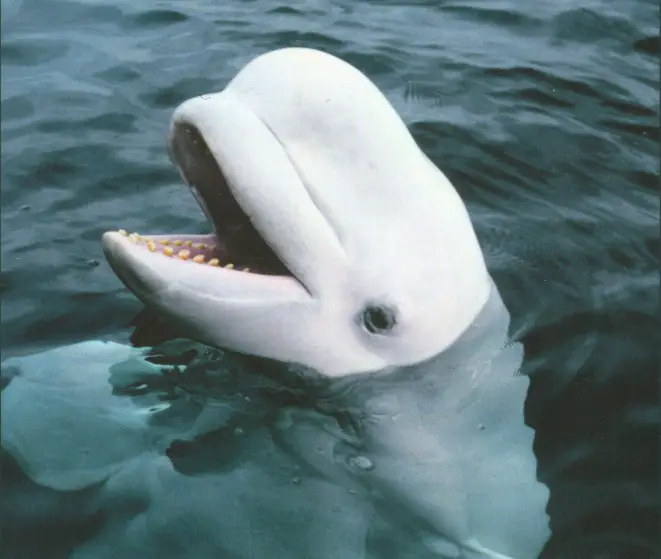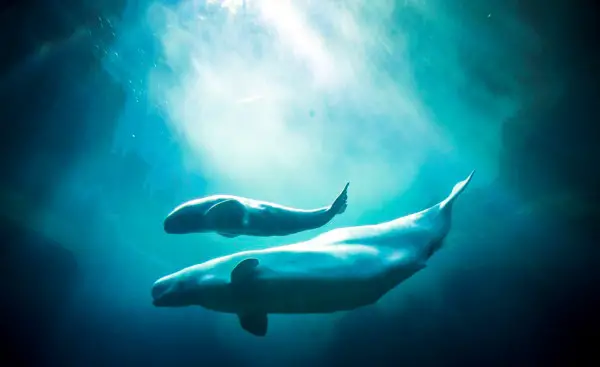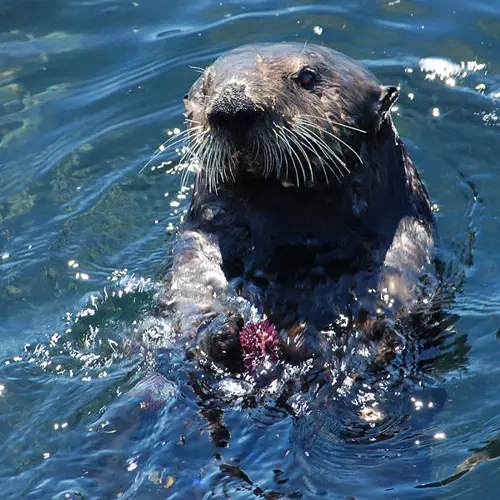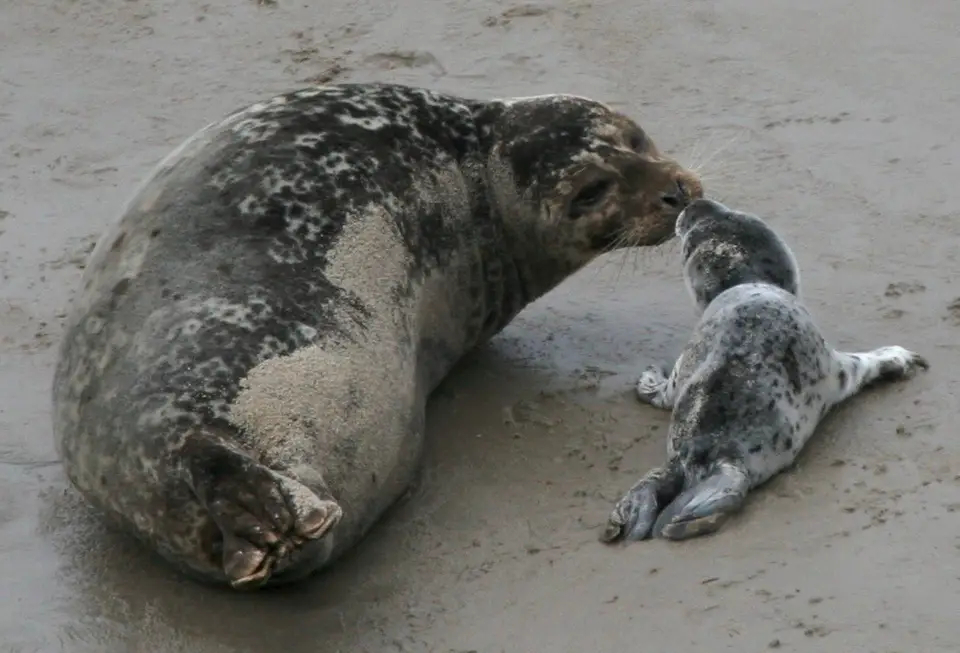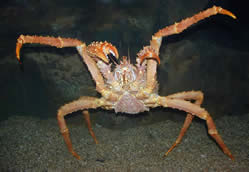Beluga
The Beluga, also commonly referred to as the White Whale is a species of predatory whales that live in the arctic waters. They are also often called “sea canaries” because many of the sounds they emit underwater can also be heard above the surface. Beluga’s white skin colour provides great camouflage in the waters they inhabit.
Belugas live in the arctic waters of North America, Greenland and former Soviet Union. They’re one of the whales that emit loud sounds underwater. The voice varies from a bird-like “cheep” to deep, roaring sounds. These sounds are mainly used to communicate, just like the Baluga uses a variety of mimics to communicate with other individuals.
Their size is not as big as other whales’, as they reach only 3-6 metres in length and up to 1.5 tons in weight. Balugas are social animals, living in groups of 10-100 individuals, but due to the decrease in population, you can rarely see groups of more than 20 Balugas. Each group is divided in a few smaller sub-groups, each of which has individuals of both sexes, but all the sub-groups merge back together when traveling to the mating waters.
Belugas have a diverse menu and very developed hunting strategies. They hunt in groups of five to six and their diet consists of crustaceans and a variety of fish that live in swarms. When hunting, the Balugas cooperate, using a specific strategy – they pursue their prey into shallow waters where they can easily swallow multiple fish at a time. These whales have teeth, but they are not used for chewing, as prey is always swallowed whole. Balugas are also physically adapted for hunting – they are ablo to move their heads and their fins are also very animate, thus making the whale quite agile and manoeuverable.
The mating period lasts from April to June, when the dominant males copulate with most of the females. After that, Balugas swim great distances to warmer and more shallow coastal waters. They have to swim about 300 km, reaching the destination in June or July. As the gestation period is 14-15 months, only the females pregnant from the previous mating period give birth. One calf is usually born and what’s interesting is that they are grayish brown and they only turn white as they grow up. When the calves are about one month old, the Balugas make their way back to their feeding waters.
The population of these whales has been damaged severely during the whaling years Balugas were easy targets for whale hunters, as each year they take the same paths on their way to mating areas. Ironically, these whales are no more being hunted because all the chemicals dumped in seas resides in these whales’ body in large concentrations.
